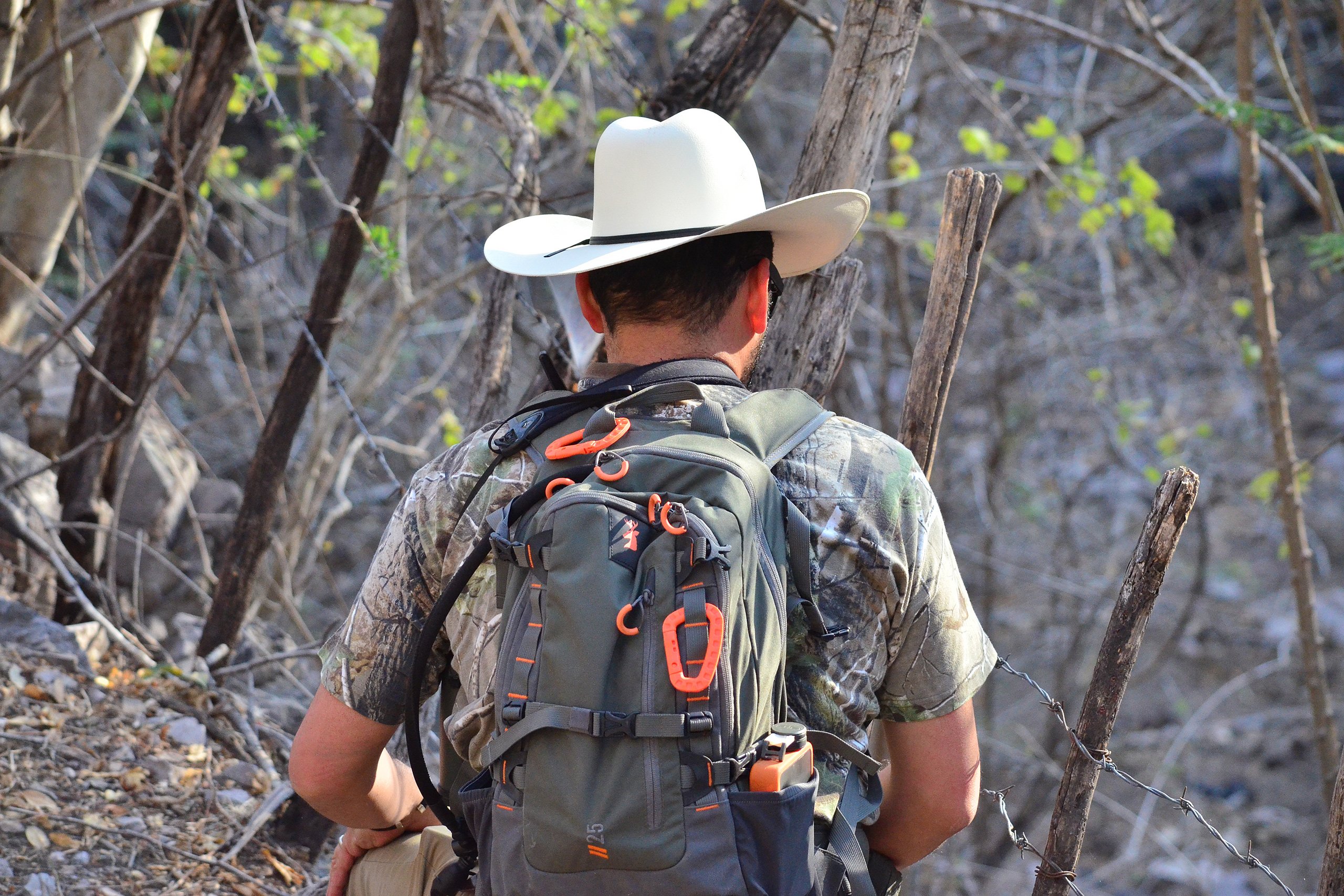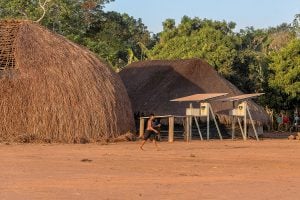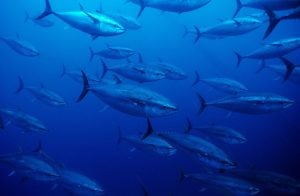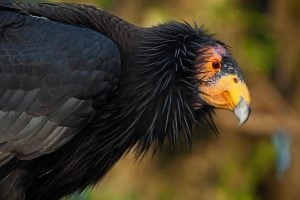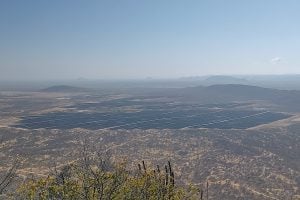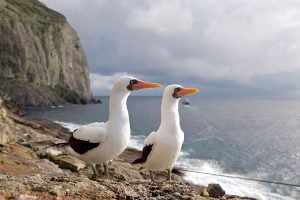As a teenager in 1970, Patricio Robles Gil and his family travelled from Mexico to Tanzania, where he shot an elephant and claimed its tusks as trophies. He recalls tracking the animal’s footprints for hours before even seeing it. “Imagine the excitement this process can cause for a 16-year-old,” he says. “It’s a ritual that has no comparison.”
It was a life-changing experience for Robles Gil, who today shoots wildlife only with his camera. His transformation from hunter to conservationist, photographer and artist has given him a unique perspective on polarising debates around hunting.
With wildlife populations the world over experiencing an unprecedented decline as a result of various human activities, in what some ecologists have called a “biological annihilation”, these debates have grown increasingly heated, particularly around one question: is it valid to kill for conservation?
A contradictory idea?
Legal hunting can be divided into three categories: subsistence hunting for personal consumption, commercial hunting for the sale of animal products, and recreational hunting, in which hunters pursue and kill animals primarily for leisure and enjoyment. Proponents of recreational trophy hunting say it can create jobs, benefit local communities and conserve nature. But critics point to the challenges of regulating the activity, or raise ethical concerns about what it means to sacrifice an animal purely for entertainment.
Robles Gil takes a long view. He says hunting was key to the success of our species, and that the hunters of the past helped to conserve large areas and many species worldwide. He gives the example of Indian Maharajas, arguing that their fondness for hunting tigers had, ironically, protected the species. But his views of modern practices are more nuanced. While he has spoken out against unsustainable hunting of endangered species, he also says that, in specific cases, hunting can contribute to conservation.
This idea may seem contradictory, but the underlying logic is simple in theory, explains Adam Hart, a zoologist and co-author of the book Trophy Hunting. “People who hunt pay for the privilege of hunting, pay licence and trophy fees, and that money goes into managing the area and providing incentives to maintain wildlife,” he tells Dialogue Earth.
Meanwhile, Hart’s co-author Nikolaj Bichel highlighted that researchers have documented the success of this approach in conserving species such as polar bears in Canada, rhinos in South Africa and markhor goats in Pakistan. In Mexico too, there are success stories.
Robles Gil mentions the emblematic example of Mexico’s bighorn sheep (Ovis canadensis). Across North America, the population of this species plummeted from around 1 million in 1800 to fewer than 25,000 by 1950, but has since recovered to between 60,000 and 80,000 individuals, according to a 2019 report by the Mexican CITES Scientific Authority. In Mexico, bighorn sheep were extirpated from large areas of the country in the 20th century due to habitat loss, livestock diseases and illegal hunting. But controlled hunting, together with intensive breeding and reintroduction programmes, has reportedly enabled the species to recover from local extinction.
According to CITES, since the beginning of authorised trophy hunting, numbers have grown steadily in Mexico, with the state of Sonora the prime example: between 2006 and 2016, its wild population reportedly increased by 40%, with an additional 2,500 sheep in captive breeding facilities.
Hunters will pay between USD 35,000 and USD 65,000 to hunt and kill a bighorn sheep, Alejandro Juárez Reina, director of wildlife management consultancy Aljure Consultores tells Dialogue Earth. He says that when landholders realise how much the animals are worth, they will take care of them and register with the government so that people can hunt them.
Mexico’s wildlife management areas
Hunters in Mexico can target 51 species of birds and 28 species of mammals, during hunting seasons set out in the General Wildlife Law. The regulation of hunting depends on a mechanism created in 1997 to allow economic use of wildlife in areas that register as Management Units for the Conservation of Wildlife (UMAs, by their Spanish initials). The Secretariat of Environment and Natural Resources regulates and monitors how UMAs sell hunting permits to the hunters using their land.
The community-managed Santa Cruz Achichipilco UMA in the central state of Puebla offers a successful example. According to research published in 2015, hunting of white-tailed deer (Odocoileus virginianus mexicanus) and other species in the UMA generated income of USD 20,000 to USD 30,000 during each year’s three-month hunting season. The controlled use of hunting resources was said to have led to both environmental and social benefits: the population of white-tailed deer increased and their habitat improved thanks to sustainable management efforts; economically, jobs were created, and the area received direct income; and socially, awareness of conservation reportedly grew, and local residents were trained in managing the UMA.
In the south-eastern state of Campeche, controlled, seasonal hunting in UMAs has reportedly benefitted ocellated turkeys (Meleagris ocellata), a species whose numbers had declined significantly because of habitat loss and overexploitation. Marie Palma Irizarry, president of Bio Animal Wild International, tells Dialogue Earth that populations of these birds recovered because hunting generated an entire economy, and gave immigrant Mennonite communities an alternative to clearing forested land for agriculture that encouraged conservation.
Do these cases represent a triumph for conservation? Nikolaj Bichel says that critics might say that regulated hunting “has led to wildlife management that overly favours hunters and the species hunted, rather than the overall health of ecosystems, which is sometimes a very fair argument.”
Many challenges
Despite positive accounts of recreational hunting, there are also many biological, economic and institutional challenges.
While hunting appears to have benefited populations of bighorn sheep in Mexico, research in Canada has revealed a curious side effect. A 30-year study of a wild population showed that hunting had contributed to a decline in body weight and horn size of male bighorn sheep, because hunters targeted those with larger horns. As a result, the animals with genes for slower horn growth were more likely to survive and reproduce, altering the population’s traits over time.
In Mexico, hunting has also been linked to negative impacts on the social structures of white-lipped peccaries (Tayassu pecari) in Calakmul, in Campeche state, with the animals observed as living in smaller-sized groups that may make them more vulnerable to predation – a change directly linked to hunting pressure in the area. Elsewhere, researchers have warned that some UMAs have tried to diversify their offer to hunters by introducing exotic species, which have potential to harm local ecosystems.
Another challenge highlighted by researchers is the narrow focus of many UMAs on hunting, which leaves them vulnerable to fluctuations in the hunting market, and means they miss opportunities to adopt more sustainable activities such as ecotourism. Experts also told Dialogue Earth that the complexity of ecosystems and the lack of professionals trained in integrated wildlife management make it challenging for UMAs to implement adequate management plans.
For Alejandro Juárez Reina, the two main challenges are ensuring that revenues generated from hunting reach local communities and that there is adequate regulation and surveillance by the authorities.
“Everyone talks about conservation,” he says, “but if you go to a community and say, ‘Don’t kill it’ or ‘Don’t touch it’, but there is no economic benefit… the community has to eat. The main thing is to generate economic income for the community. Then, everyone will take care of the animals.”
Experts also told Dialogue Earth how weak regulation and oversight can lead to illegal practices such as hunting of females, calves or protected species. Corruption and a lack of transparency in managing UMAs can also lead to overexploitation of wildlife and habitat degradation.
But according to Arturo Berlanga, director of animal rights organisation AnimaNaturalis México, regulatory controls are practically impossible to enforce. He points out that the Directorate-General of Wildlife, an agency under the environment secretariat, oversees more than 11,000 UMAs and small or medium enterprises. Each UMA must submit an environmental and wildlife management plan annually, report animal deaths with a veterinary medical certificate, and also report the sale or reproduction of animals.
“Does the government have the capacity to verify this?” Berlanga asks. “No.”
Trophies of triumph
Beyond the challenges of implementing public policy, and questions about ecological impacts, there are also ethical concerns about hunting, especially regarding trophy hunting. This practice, in which hunters retain parts of the animal – such as deer antlers or the horns of bighorn sheep – as symbols of their triumph, sparks particularly heated debate.
Javier Sánchez, a 43-year-old who hunts with his father and sons, says he treasures every moment with the trophies he keeps at his home in Puebla. He sees hunting as a way to contribute to conservation but, above all, as a way to encounter and appreciate nature with friends and family. The trophy, he tells Dialogue Earth, is just “the icing on the cake”.
But a look at almost any social media account where hunters exhibit their trophies can reveal solid public opposition. Researchers have also suggested this to be especially true in the case of wealthy hunters who pursue large mammals such as lions and elephants, reinforcing a macho, anthropocentric and chauvinistic discourse.
Animal lovers will never understand hunters. And hunters will never understand animal lovers.Patricio Robles Gil, conservationist and photographer
For Ramón Pérez Gil, president of the Mexican Committee of the International Union for Conservation of Nature (IUCN) “bad hunters” and “happy triggers” should be opposed, but he acknowledges the potential of well-managed hunting to support conservation efforts, creating a balance between human needs and ecological preservation.
In an interview for EarthxTV, Mexican hunter Oscar Garzón said he would tell anyone who criticised him for killing an animal that he is “taking advantage of everything, from the skin and the meat… everything. When you give value to the animal, you will take care of it.” The aim, he said, “is not to come and kill, right and left, whatever comes out. Conversely, if the studies and the authorities tell you that the ranch can take advantage of five animals, you will limit yourself to three, so that it is a sustainable activity.”
But for Arturo Berlanga, this way of thinking is a result from Mexico’s General Wildlife Law, which he describes as “obtuse, archaic, and obsolete” for prioritising the exploitation and commercialisation of animals over their conservation and welfare. He argues that this law allows wild animals to be treated “as mere objects rather than living beings with rights”.
Berlanga cites the 2012 Cambridge Declaration, in which neuroscientists concluded that mammals, birds and other animals have the same neurological substrates needed to generate consciousness as humans do. The word “respect” emerges in his argument against hunting. He asks of hunters: “Who are you to deprive the life of another living being?”
Zoologist Adam Hart says some people would rather see species go extinct than be hunted. “If you are ethically against the killing of animals, including hunting as part of conservation tools, then no matter how great the benefits, it will never work for you.”
Patricio Robles Gil agrees: “Animal lovers will never understand hunters. And hunters will never understand animal lovers.”
But as he has shown, hunters can change.
On the trail of the jaguar
It was more than 50 years ago that Robles Gil, as a teenager, shot the elephant. Back then, ivory poaching and elephant conservation were not such prominent public issues, and he says he does not regret taking part in the hunt.
“That moment changed my life,” he says. “It was a moment in my life that contributed to a series of things. Perhaps it helped shape who I am, the conservationist, more respectful of nature.”
He describes entering a “gradual process” in which he decided to exchange his rifle for a camera so that, instead of shooting, he could promote the conservation of nature through images. In 1984, he published his first book of wildlife photography. By 1992, he had founded two conservation organisations in Mexico, encouraging private companies to buy land and secure it in perpetuity for wildlife.
The highlight of his career as a nature photographer came on the banks of the Cuiabá and Piquiri rivers, in Mato Grosso, Brazil. He arrived there in 2010 after trying for 40 years to see a wild jaguar. In his head echoed the words of his admired older brother, who had told him: “If you want to be a man, you have to kill a jaguar with a spear, as the real hunters do in Mato Grosso.”
Staying there for five months, Robles Gil had 180 encounters with 40 different jaguars and captured some of the most beautiful and significant images of this species in the wild.
He did not kill them. He immortalised them.
